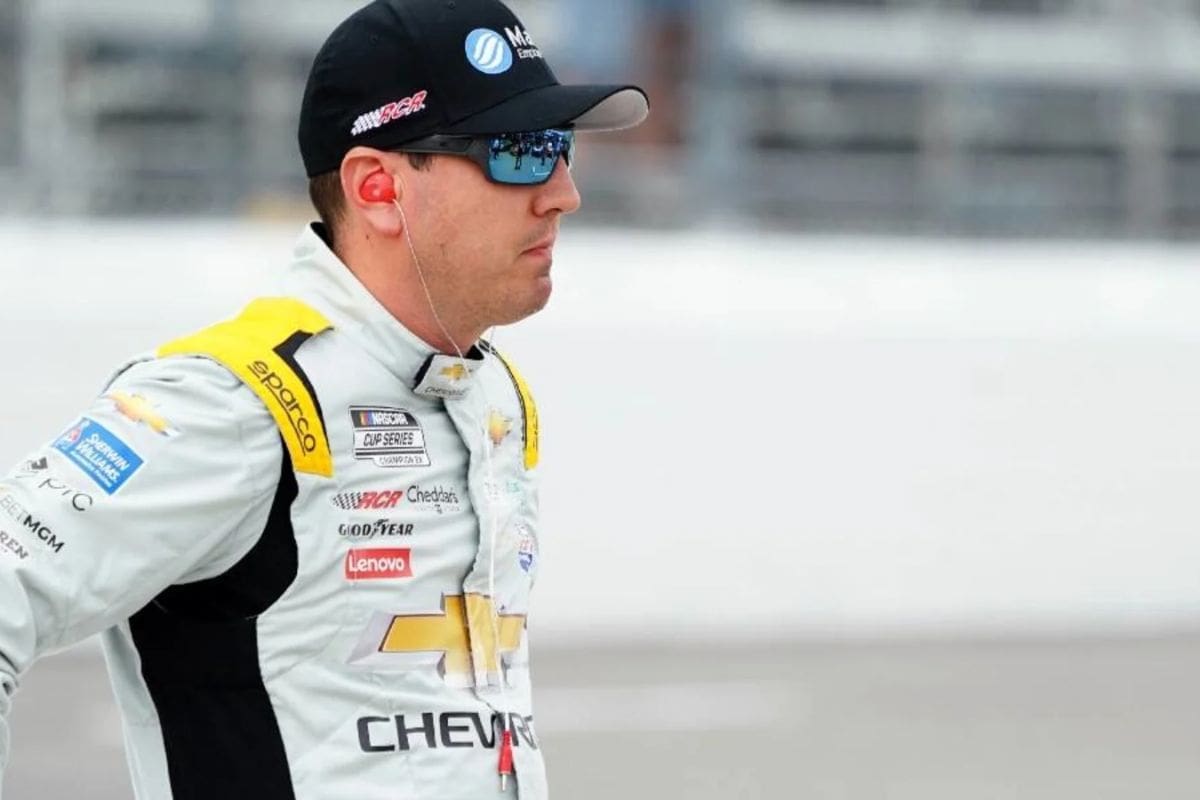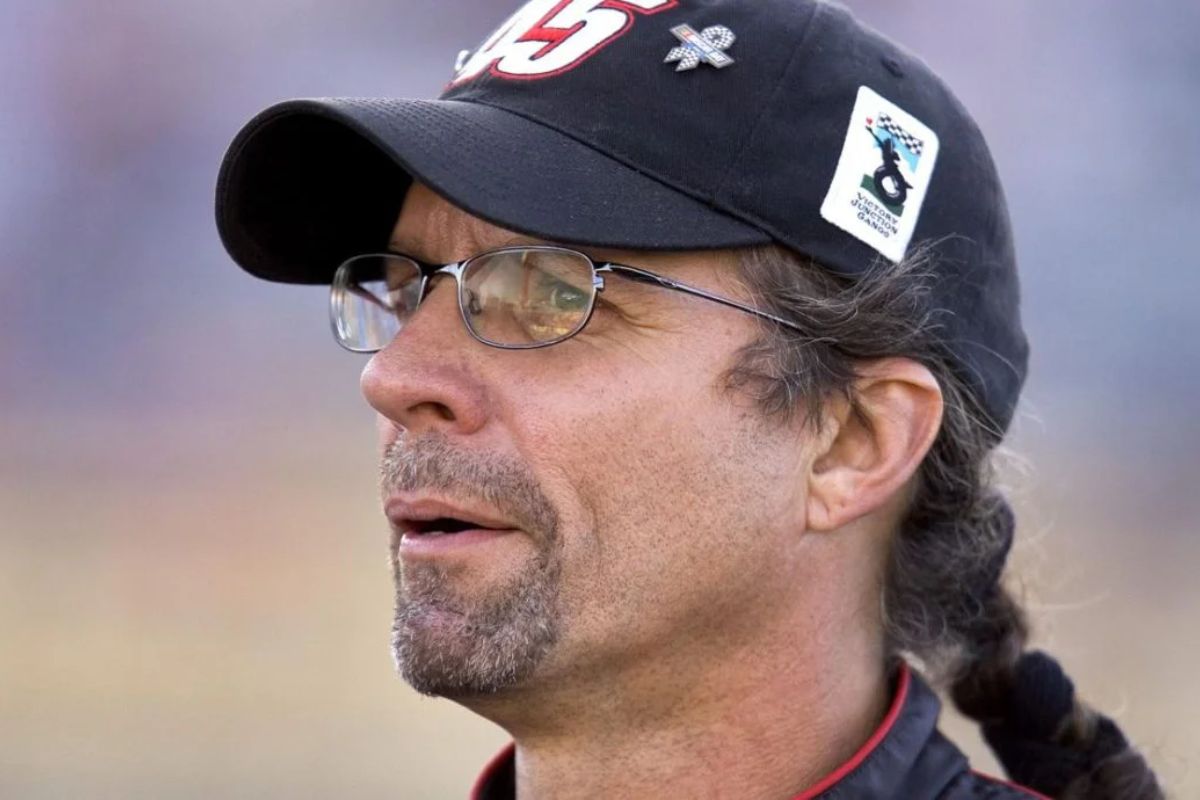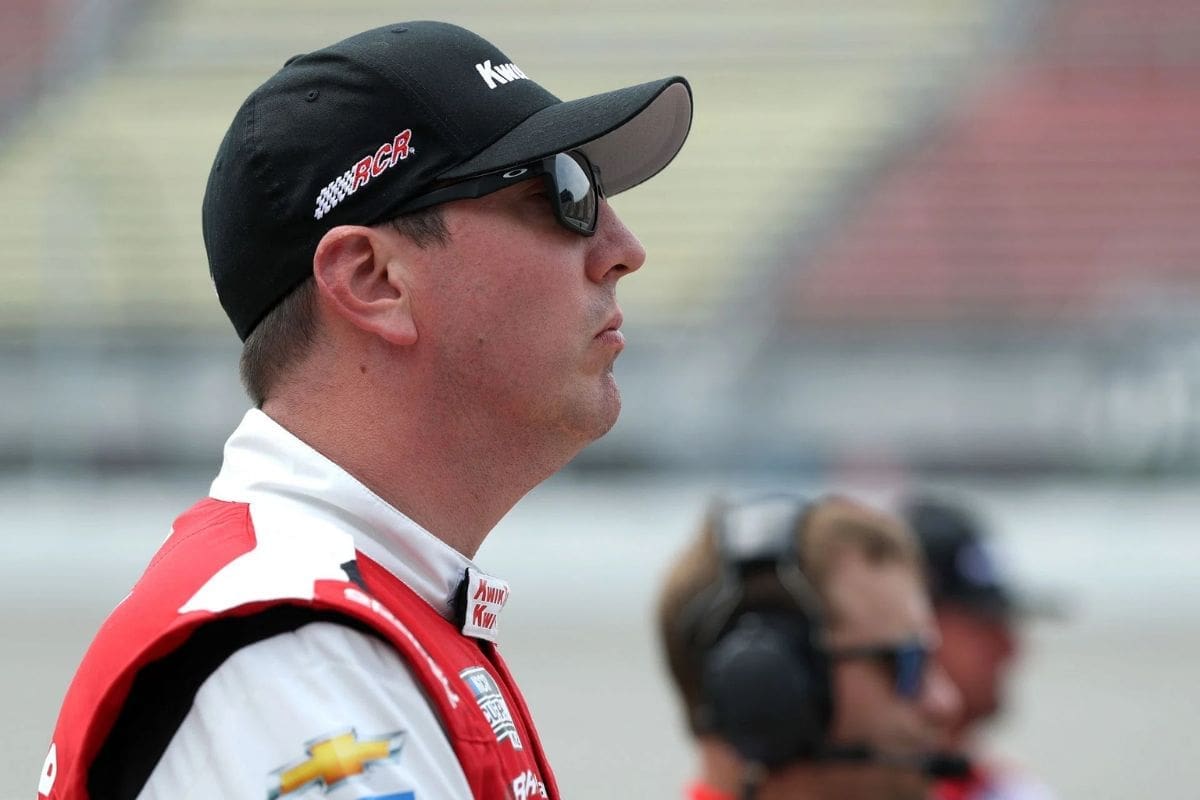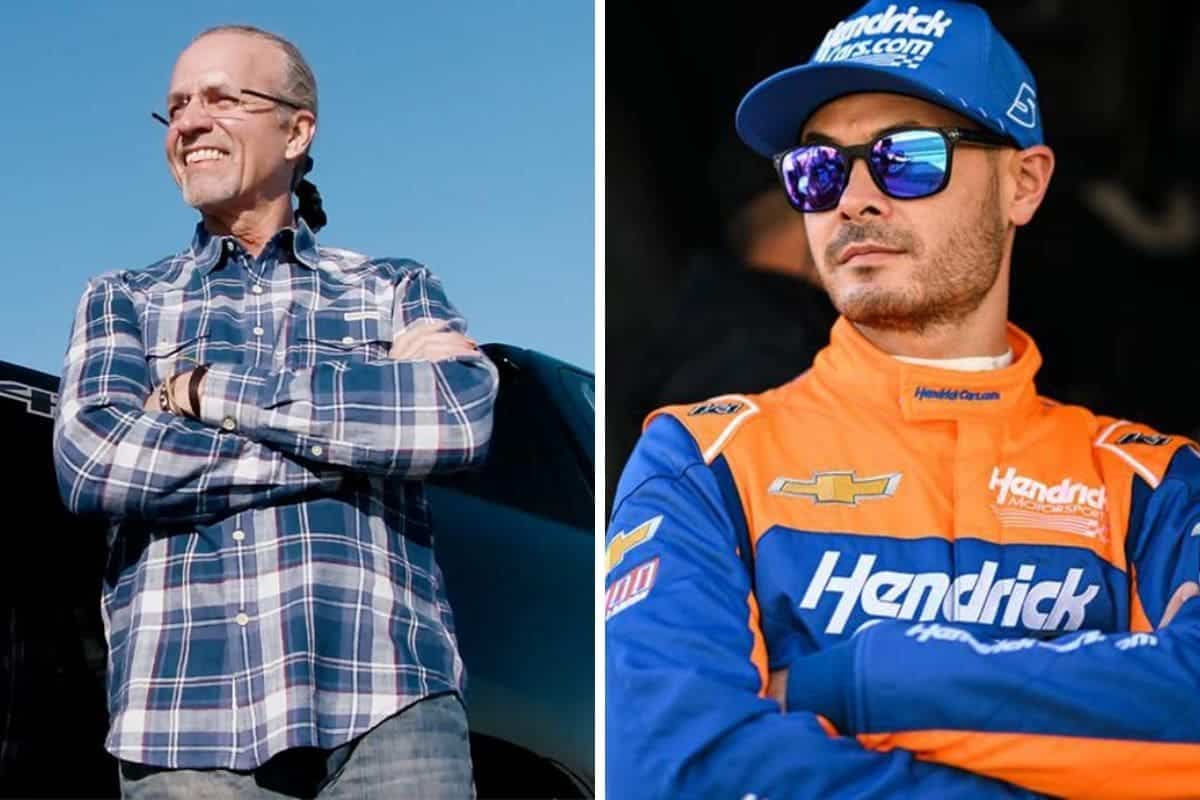Kyle Petty Draws Larson Parallels: Kyle Petty‘s recent critique of Richard Childress Racing’s decision to bring Kyle Busch on board, while highlighting the significant role of team dynamics in NASCAR. Petty points out the disparity in Busch’s performance at RCR compared to his previous tenure at Joe Gibbs Racing, raising questions about RCR’s capability to provide the necessary support for their drivers. This scrutiny on RCR’s organizational effectiveness invites a deeper examination of whether Busch’s struggles are indicative of broader systemic issues within the team.
Key Highlights
- Kyle Petty criticizes RCR for not providing Kyle Busch with sufficient organizational support.
- Petty draws comparisons between Busch’s decline at RCR and Kyle Larson’s success at Hendrick Motorsports.
- Busch’s performance at RCR includes only 5 top-10 and 2 top-5 finishes, highlighting a significant decline.
- Success in NASCAR heavily depends on team infrastructure, as evidenced by Larson’s results at Hendrick.
- Speculation arises about Busch’s potential move to a top-tier team for better career prospects.
Kyle Busch’s Subpar Season at RCR
Kyle Busch’s disappointing performance at Richard Childress Racing (RCR) this season highlights a significant decline from his previous dominance in NASCAR. Once a strong contender and a formidable presence on the track, Busch’s current season has been lackluster, failing to meet the high expectations set by his past.
With only five top-10 finishes and a mere two top-5 finishes, his results reflect a stark contrast to his previous achievements, raising questions about the underlying causes of his underperformance.
Busch’s shift to RCR was initially met with optimism, considering his decorated career and the storied history of the team. However, the synergy expected between driver and team has evidently faltered. The statistics speak volumes: Busch’s average finish this season is significantly lower than in his years with Joe Gibbs Racing, where he regularly contended for victories and championships.
Analyzing Busch’s subpar season requires acknowledging the multifaceted nature of motorsports. Factors such as car performance, team dynamics, and strategic decisions all play pivotal roles in a driver’s success. Yet, Busch’s struggles at RCR suggest deeper issues.

Criticism from Kyle Petty
In an honest evaluation on NASCAR’s YouTube Channel, Kyle Petty did not hesitate to criticize the organizational support at RCR, attributing Kyle Busch’s struggles to the team’s inability to enhance his performance. Petty’s assessment was both frank and unwavering, drawing a stark comparison between Busch’s current plight and his previous success at Joe Gibbs Racing (JGR).
“Kyle Busch. Where has Kyle Busch gone? I have no idea. He started last season pretty strong, and I thought, hey this is pretty good. You go from Gibbs to Childress, you make that organization a winner and then they disappear.” – Petty
Petty’s critique centers on what he perceives as a significant shift in support and developmental resources at Richard Childress Racing (RCR). According to Petty, the switch from JGR, where Busch enjoyed considerable success and robust team backing, to RCR, has effectively demoted the two-time Cup Series champion to a mid-pack driver. This decline, Petty argues, is less about Busch’s capabilities and more about the infrastructure—or lack thereof—at RCR.
Highlighting the organizational variances, Petty emphasized that Busch’s talent remains intact but is being wasted in an environment that cannot capitalize on it. He painted a picture of a driver who went from being a consistent frontrunner to struggling for top-10 finishes. This, Petty contends, is a failing on the part of RCR’s management and technical teams.
Petty also pointed to Kyle Larson’s recent success at Hendrick Motorsports as a comparison to Busch’s situation. Larson’s comeback, he noted, is a demonstration of what a well-supported, effectively managed team can do for a driver’s career. By contrasting Busch’s struggles with Larson’s accomplishments, Petty emphasized the important role organizational support plays in a driver’s performance, casting doubt on RCR’s ability to lift Busch back to his former glory.
Role of Team Dynamics
Petty’s analysis brings into sharp focus how the intricate dynamics within a team can profoundly affect a driver’s performance and career trajectory as a whole. The disparate trajectories of Kyle Busch and Kyle Larson accentuate this point vividly. Larson’s rise since joining Hendrick Motorsports, clinching 20 victories since 2021, is a confirmation of the symbiotic relationship between driver and team. Conversely, Busch’s struggle to replicate his previous success at Richard Childress Racing (RCR) highlights the critical impact of organizational factors on a driver’s fortunes.
“The organization has made Kyle Larson a better winner. The organization has taken Kyle Busch from being a competitive winning driver to just being a guy racing for 8th, 9th, and 10th.” – Petty
The success of Larson at Hendrick Motorsports is not solely attributable to his driving skill but also to the robust support system and culture of excellence fostered within the organization. Hendrick Motorsports has historically demonstrated an adeptness at synergizing driver talent with team capabilities, creating an environment where drivers can flourish. Larson’s achievements emphasize the significance of a cohesive team framework where engineering excellence, strategic insight, and driver skill coalesce seamlessly.
On the flip side, Busch’s challenges at RCR suggest that team dynamics can also serve as a limiting factor. Petty posits that Busch’s lackluster performance is not merely a reflection of individual shortcomings but indicative of deeper, systemic issues within RCR. The organizational stability, the quality of technical support, and the strategic decisions made by the team play an indispensable role in a driver’s success. Without these elements aligning optimally, even a driver of Busch’s caliber can find his potential stymied.
“Kyle Busch has made his own luck at RCR Racing.” – Petty

Considerations for Busch’s Future
As speculation regarding Kyle Busch’s future, his openness to entertain a return to a top-tier team highlights the strategic decisions he must weigh to rejuvenate his career. Busch’s potential move to a powerhouse like Joe Gibbs Racing (JGR) or Hendrick Motorsports signifies more than just a change in scenery; it represents a critical point where competitive aspirations and team synergies must align.
“I would say anything is possible always. Certainly that if I was welcome [at JGR] I would go back. If Hendrick welcomed me I would go back.” – Busch
Busch’s current tenure with Richard Childress Racing (RCR) underlines his dedication to resolving internal challenges, yet the allure of a top-tier team cannot be understated. His contract with RCR extends until the end of next season, offering a finite window to evaluate performance improvements and team dynamics. During this period, Busch must balance his loyalty with practical career planning, making sure that any decision optimally positions him for future success.
The mention of alternative teams such as 23XI and Wood Brothers Racing adds another layer of complexity. While these teams present viable options, the competitive edge and proven track records of JGR and Hendrick Motorsports are compelling. A return to these teams could utilize Busch’s extensive experience and skill, potentially catalyzing a resurgence in his racing career.
Ultimately, Busch’s future hinges on a calculated assessment of performance metrics, team culture, and long-term potential. His openness to rejoining a top-tier team reflects an astute recognition of the competitive landscape and a willingness to make bold moves.
Outlook for the Remainder of the Season
With the season entering its critical phase, Kyle Busch faces mounting stress to demonstrate noteworthy performance improvements at Richard Childress Racing. The challenges he’s encountered, including notable pit crew issues, have sparked questions about his trajectory for the remainder of the season. Busch’s ability to overcome these obstacles will be decisive in determining whether he can reclaim his competitive edge or if more drastic measures will be required to revive his career.
“But right now I’m at RCR with my group of guys and the deal that we have in place. So we’re trying to build this program and make RCR great again.” – Busch
- Pit Crew Efficiency: The efficiency of Busch’s pit crew has been a recurring issue, with incidents like those at the Daytona 500 highlighting critical weaknesses. Addressing and rectifying these issues will be imperative for improved performance.
- Team Dynamics: Integrating seamlessly with the RCR team is crucial. Building strong relationships with engineers, crew chiefs, and other team members can significantly impact on-track results.
- Strategic Adaptations: Adapting race strategies to better suit Busch’s driving style and the team’s strengths is essential. This includes making data-driven decisions and being agile in response to race conditions.
- Mental Resilience: Busch’s mental fortitude will be tested. Maintaining focus and composure under stress is vital to navigate the competitive landscape and achieve consistent results.

News in Brief: Kyle Petty Draws Larson Parallels
Kyle Petty’s critique highlights the significant role team dynamics play in NASCAR, as demonstrated by Kyle Busch’s decline in performance at Richard Childress Racing compared to his tenure at Joe Gibbs Racing.
The comparison with Kyle Larson’s success at Hendrick Motorsports further accentuates the necessity of robust organizational support.
This scrutiny on RCR’s infrastructure raises critical questions about the team’s capacity to provide crucial resources, casting doubt on Busch’s future success and the team’s general competitive outlook.
Our Reader’s Queries
Q. What is Kyle Petty doing?
A. After retiring, Kyle became a racing commentator for FOX Sports, SPEED TV, and TNT. Now, he appears on NBC and USA Network for pre- and post-race NASCAR Cup and Xfinity coverage.
Q. Does Kyle Larson race for Hendrick Motorsports?
A. Kyle Larson drives the No. 5 Chevrolet for Hendrick Motorsports full-time in the NASCAR Cup Series. He won the 2021 championship with a victory at Phoenix Raceway in the final race.
ALSO READ: Kyle Petty Praises Austin Cindric Amid Ryan Blaney’s Setback

